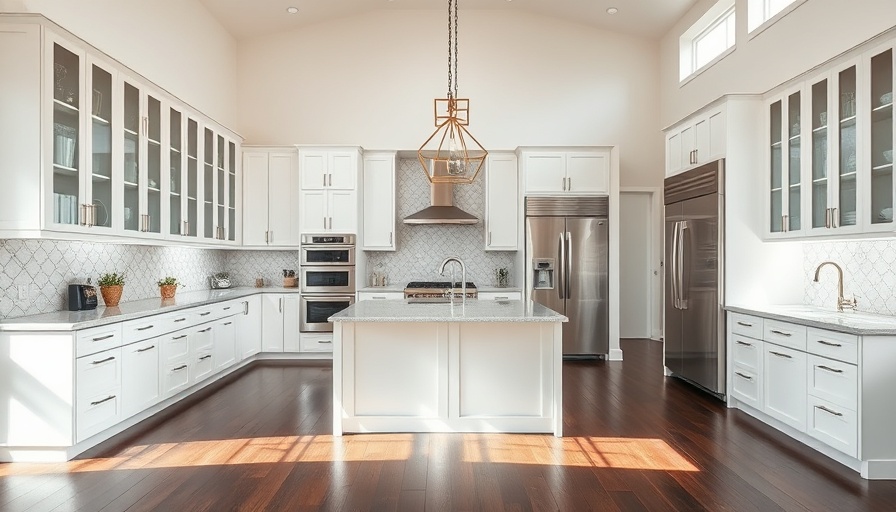
The Shift from the Kitchen Work Triangle to Multi-Functional Zones
For decades, kitchen design adhered to a rigid principle: the work triangle. This traditional approach promoted proximity between the stove, sink, and refrigerator. However, as family dynamics evolve, so do our kitchen needs. Today’s kitchens are busy hubs of activity, accommodating homework, social gatherings, and culinary creations all at once, necessitating a shift from the classic triangle concept to a more dynamic, zone-based design.
Understanding Why Zoning Matters in Modern Kitchens
The shift to a zone-oriented approach represents a profound understanding of how families interact with their kitchens. No longer a solitary space for cooking, today's kitchens are designed for interaction, featuring dedicated areas for preparation, cooking, cleanup, and even socializing. This reconfiguration not only enhances functionality but ensures that multiple family members can work harmoniously in the same space.
Designing Functional Zones: Elements Everyone Needs
Modern kitchens require several distinct zones, each tailored to specific activities. Below are the key elements that transform a simple kitchen into a multi-functional family hub:
- Preparation Zone: This space should be equipped with ample counter space and proximity to both the refrigerator and sink. Popular designs integrate islands that allow for multiple chefs to engage in food prep simultaneously.
- Cooking Zone: Beyond just the stove, this area now includes advanced appliances like wall ovens, air fryers, and sometimes even outdoor grills. Its design focuses on efficiency and multitasking capability.
- Cleaning Zone: The cleanup area should facilitate movement from dirty to clean, efficiently moving items from the sink to the dishwasher. Ideally, it’s strategically placed in relation to both the cooking and preparation areas.
- Storage Zone: With families purchasing more in bulk, adequate storage is critical. This zone should include easy-to-reach cabinets and deep drawers designed for large pots and appliances.
- Dining and Social Area: As kitchens evolve into gathering spots, integrating seating areas and ensuring they are inviting must be prioritized.
Maximize Efficiency: Tips and Tricks for Zone-Based Design
Effective kitchen zoning not only enhances the cooking experience but also allows for easier family interaction. Here are some practical tips to consider:
- Create open pathways to avoid congestion. Design traffic flow that keeps high-traffic paths clear and safe.
- Incorporate technology smartly. For instance, adding charging stations or integrated devices can streamline workflows.
- Always use quality materials. Be it countertops or cabinetry, durable designs withstand the demands of a busy kitchen.
- Consider lighting as a functional element. Task lighting can enhance safety and comfort during food preparation.
Looking Ahead: Trends in Kitchen Design for Family Living
The emerging trends in kitchen design place an emphasis on family integration. Designing kitchens that allow parents to supervise children while cooking or creating spaces for homework fosters bonding. The rise of open concepts and multiple workstations create a dynamic space for all family members.
Investing in Your Kitchen: Why You Should Start Now
Upgrading your kitchen isn’t just about aesthetics; it’s an investment in your family’s lifestyle. A well-planned kitchen can ease daily pressures and create a welcoming environment for both cooking and socializing. If you’re considering a kitchen remodel or just making small updates, ensure your design reflects both function and family needs.
 Add Row
Add Row  Add
Add 



Write A Comment